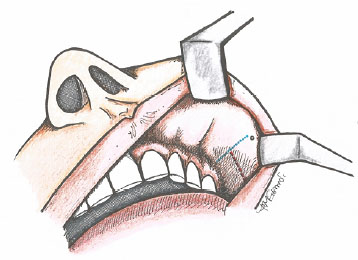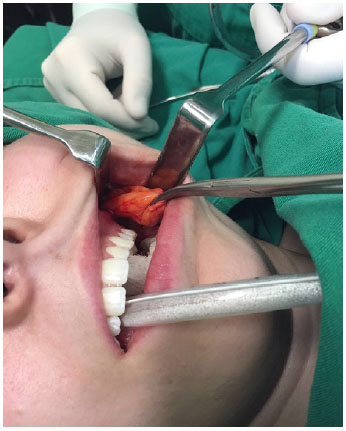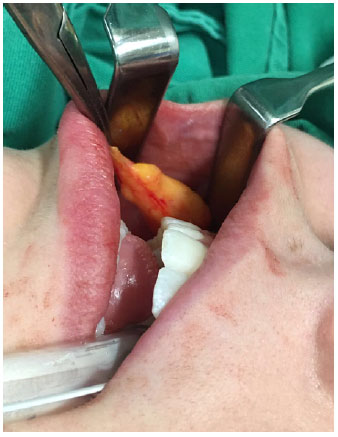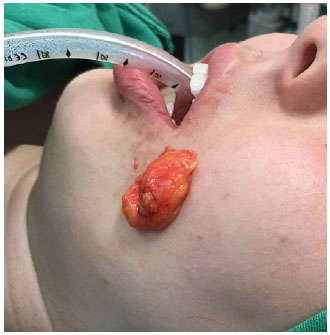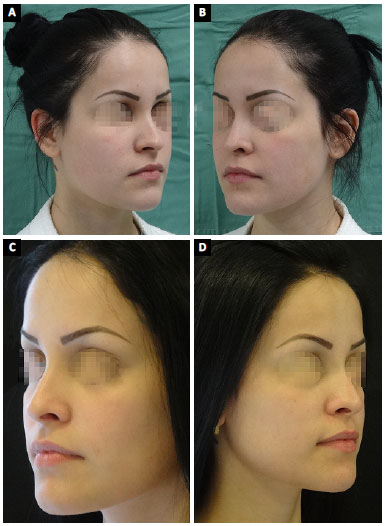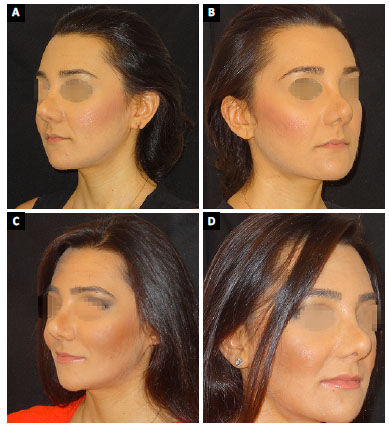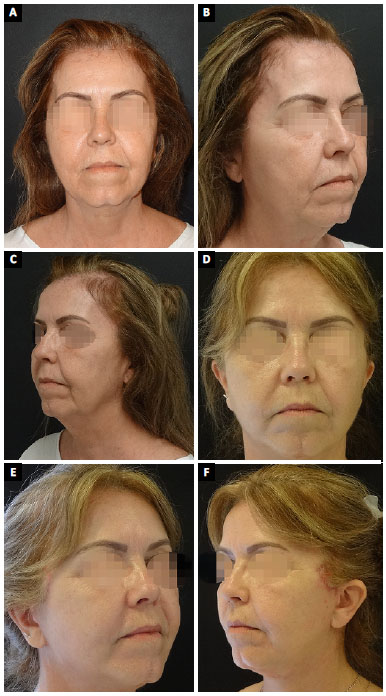ABSTRACT
INTRODUCTION: Despite buccal fat removal having been performed for a long time, its popularity has increased only in recent years, leading to a rise in the demand for bichectomy in plastic surgery clinics. Buccal fat pad removal is still considered controversial, even when properly indicated, especially with the lack of a systematized surgical technique to make it safe and reproducible.
METHODS: The intraoral bichectomy described herein was systematically applied in 27 consecutive patients from January 5, 2016 to December 15, 2016.
RESULTS: The mean patient age was 32 years; 15% were men, and 85% were women. Isolated buccal fat pad removal was performed in six patients (22%) and in combination with other procedures in 21 patients (78%). The main procedure combined was neck liposuction (55%), and most patients were operated under general anesthesia (93%). No permanent or significant complications occurred, and there were only two minor complications, i.e., inferior mandibular neuropathy and significant swelling, which improved without treatment during the following weeks.
CONCLUSIONS: Buccal fat removal can be performed in a predictable, fast, and safe manner, leading to volumetric reduction of the lower third of the face, enhancing facial shape. When applied in a safe surgical environment, following all surgical security standards and considering the complex anatomical boundaries of the cheek, our technique can yield secure and satisfactory outcomes both for surgeons and patients.
Keywords:
Rhytidoplasty; Anatomy regional; Reconstructive surgical procedures.
RESUMO
INTRODUÇÃO: Embora realizada há muito tempo, a remoção da bola de Bichat ganhou notoriedade nos últimos anos devido a sua grande procura nos consultórios do cirurgião plástico. Mesmo quando adequadamente indicada, ainda é considerada um procedimento controverso, uma vez que ainda não existe uma técnica cirúrgica sistematizada na literatura atual, visando torná-la segura e reprodutível.
MÉTODOS: A técnica da bichectomia intraoral descrita no trabalho foi aplicada de maneira sistemática em uma série de 27 pacientes consecutivos, no período de 5 de janeiro de 2016 a 15 de dezembro de 2016.
RESULTADOS: A idade média dos pacientes foi de 32 anos, sendo 15% do sexo masculino e 85% do sexo feminino. A bichectomia foi realizada isoladamente em 6 pacientes (22%) e em conjunto com outros procedimentos em 21 pacientes (78%). O procedimento mais comumente associado foi a lipoaspiração cervical, realizada em 55% dos pacientes. A imensa maioria dos casos foram operados com anestesia geral (93%). Nenhuma complicação permanente e importante foi verificada no pós-operatório, apenas um caso de neuropatia transitória do ramo bucal e um caso de edema mais pronunciado, que prontamente se resolveram nas semanas seguintes.
CONCLUSÃO: A remoção de gordura bucal pode ser realizada de forma previsível, rápida e segura, proporcionando diminuição volumétrica do terço inferior facial, com maior realce dos contornos faciais. Quando aplicada em um ambiente cirúrgico seguro, seguindo todos os padrões de segurança da cirurgia e respeitando os complexos limites anatômicos da região, nossa técnica levará os cirurgiões e pacientes a um resultado seguro e satisfatório.
Palavras-chave:
Ritidoplastia; Anatomia regional; Procedimentos cirúrgicos reconstrutivos.


